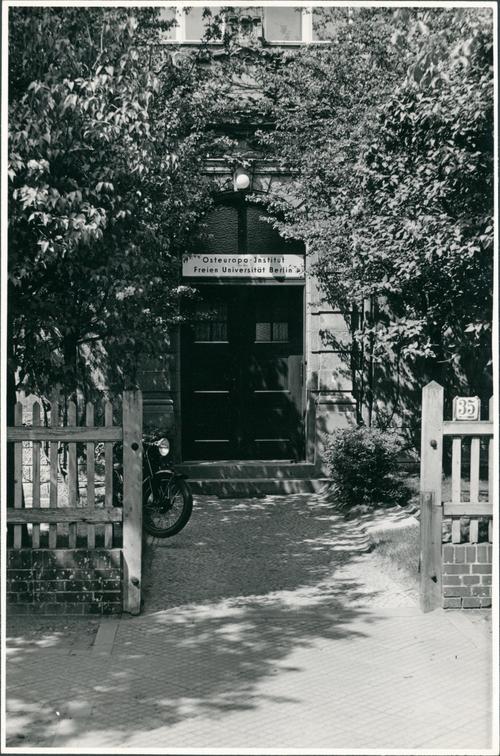Founding Phase
The Institute for East European Studies or Osteuropa-Institut (OEI) was founded during turbulent times when all of the Berlin university landscape was being recreated. This process involved representatives of the federal government, the American occupation authorities, the city of Berlin and Freie Universität Berlin. In November 1951, three years after the university’s foundation, the Institute for East European Studies opened its doors at Ehrenbergstraße 35 in Berlin-Dahlem – as one of the first institutions of this kind in the Federal Republic of Germany. Establishing an institute for the study of Eastern Europe was a programmatic signal: the aim was to free such research from the spirit of National Socialism while also finding a place in the new academic and social context of the Cold War.
At the founding ceremony on 24 November 1951, the West Berlin mayor Ernst Reuter advocated for regarding the countries behind the Iron Curtain as a part of Europe. He expressed the hope that “the Institute should contribute to forging a bond with the peoples of Eastern Europe and pointing the way to a better future”. The Institute for East European Studies remains committed to this mission to this day.
After ten years, the OEI had grown from four to nine departments: Slavic Studies, History, Economics and Law were joined by Regional Studies and Sociology, Medicine, Education and Art History. In the summer of 1961, the institute moved into a new building in Garystraße 55.
